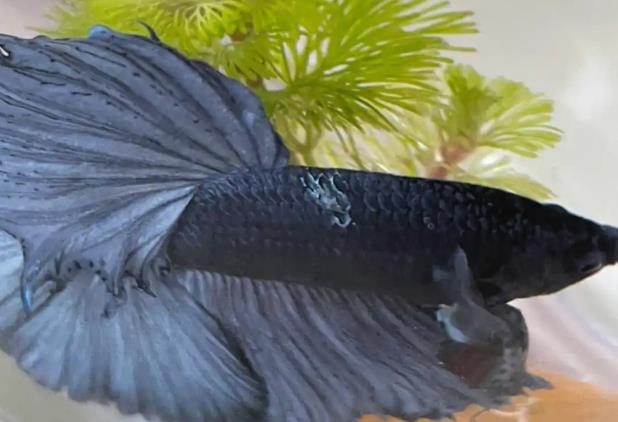The appearance of white spots on betta fish is usually a sign of ichthyophthiriasis (ich), a common disease caused by a parasite called Ichthyophthirius multifiliis. Below is a detailed analysis and treatment methods:

I. Symptom Identification
Early-stage symptoms: Pinpoint-sized white spots appear on the fish’s body, mostly distributed on the fins, gills, or skin. Infected fish will frequently rub against hard objects or jump at the water surface.
Mid-to-late-stage symptoms: The white spots spread and form patches, and the fish’s body becomes covered in a white mucous film. The fish may lose weight, swim sluggishly, and in severe cases, experience difficulty breathing or even die.
II. Causes and Onset Conditions
Pathogen: Ichthyophthirius multifiliis (ich parasite). Its larvae spread through water, while adult parasites form white cysts to protect themselves, making them difficult to kill directly with medications.
Triggering factors:
Fluctuating water temperature: Outbreaks are more common in autumn, winter, or during seasonal transitions, with temperatures between 14–25°C being the high-risk range.
Deteriorating water quality: Infrequent water changes or inadequate filtration lead to the growth of pathogens.
Low immunity: Juvenile fish, scaleless fish, or fish weakened by transportation are more susceptible to infection.
III. Treatment Methods
Isolation and Basic Care
Immediate isolation: Prevent the spread to other fish.
Raise water temperature: Gradually increase the water temperature to 28–30°C and maintain it for a week; high temperatures inhibit the reproduction of ich parasites.
Salt bath: Soak the fish in a 1% coarse salt solution for 20–30 minutes per day, or add salt to the entire tank (25 grams of salt per 100 liters of water).
Medication
Ich treatments/methylene blue: Follow the instructions for bathing the fish. In severe cases, combine with mercuric nitrate (use with extreme caution).
Methylene blue + oxytetracycline: Suitable for mixed infections; apply the medication after changing all the tank water.
Water Quality Management
Replace 1/3 to 1/2 of the water, clean the filter media, and keep the water temperature stable.
Enhance filtration to avoid excessive ammonia and nitrite levels.
IV. Preventive Measures
Stabilize water temperature: Use a heater to maintain the temperature above 25°C and avoid large day-night temperature fluctuations.
Regular quarantine: Disinfect new fish with potassium permanganate or salt water before introducing them to the tank.
Boost nutrition: Feed high-quality food to improve the fish’s immunity.
Notes
Avoid overusing medications: Potent drugs like mercuric nitrate must be used strictly according to dosage to prevent fish poisoning.
Monitor recovery: If there is no improvement within 3–5 days, adjust the treatment plan or consult a professional.
Most cases of ich can be effectively controlled with the above methods. If the condition recurs, it is advisable to check water quality parameters or investigate other potential diseases.
